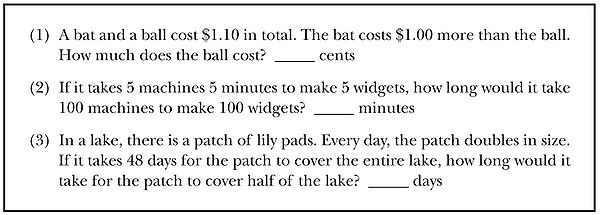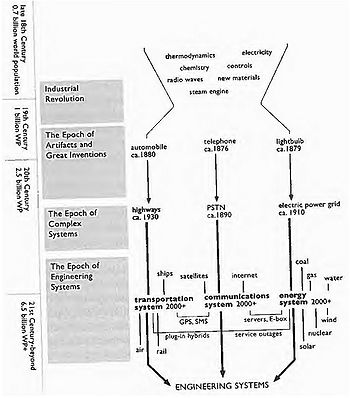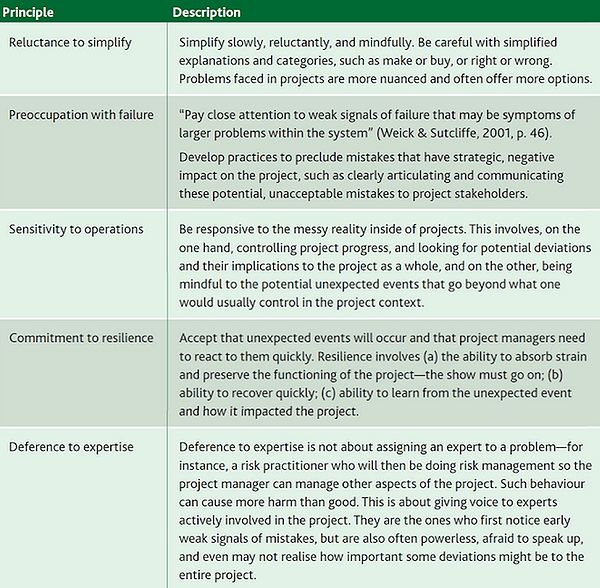Mindfulness and Cognitive Biases in Project Management
Before introducing the concept of mindfulness and cognitive biases in relation to project management, a short introduction to complexity and the thinking behind ‘engineering systems’ are necessary, as to explain its relevance and usefulness.
Contents |
Complexity
Even among scientists, there is no unique definition of Complexity (Johnson, 2009). Instead, real-world systems of what scientist believe to be complex, have been used to define complexity in a variety of different ways, according to the respective scientific fields. Here, a system-oriented perspective on complexity is adopted in accordance to the definition in Oehmen et al. (2015), which list the properties of complexity to be:
- Containing multiple parts;
- Possessing a number of connections between the parts;
- Exhibiting dynamic interactions between the parts; and,
- The behaviour produced as a result of those interactions cannot be explained as the simple sum of the parts (emergent behaviour)
In other words, a system contains a number of parts that can be connected in different ways. The parts can vary in type as well as the connections between them can. The number and types of parts and the number and types of the connections between them, determines the complexity of the system. Furthermore, incorporating a dynamic understanding of systems, both the parts and their connections changes over time. The social intricacy of human behaviour are one of the larger reasons for this change. We do not always behave rationally and predictably, as will be further examined below, which increases the complexity of every system where humans are involved.
Engineering systems
The view that our modern lives are governed by engineering systems, articulated by Weck, Roos, and Magee (2011), are adopted to explain why the complexity of the world only goes one way, upwards. In short, they distinguish between three levels of systems; artifact, complex, and engineering. At artifact level we have inventions such as, cars, phones, the light bulb, etc. In itself, they do not offer any real benefits to our lives. To utilize their potential, and to exploit their respective benefits, the right infrastructure has to be present. Following the above example, the needed infrastructure consists of; roads, public switched telephone network (PSTN), and the electrical power grid. This level of interconnectedness are defined as the complex system level. Following the development of the earlier separated transportation, communication, and the energy systems, one sees that everything is getting increasingly interconnected. This is the engineering systems level. See Figure 1 for a visual representation of the above example.
One of the characteristics of our modern society and the engineering systems governing it, is that technology and humans cannot any longer be separated. Engineering systems is per definition socio-technical systems, which as described in the section above, only adds to the complexity. “Without the right tools to analyse and understand them, complex systems become complicated: They confuse us, and we cannot control what happens or understand why” (Oehmen et al., 2015, p. 5). Mindfulness is one of those tools that can be adopted to project management to help decomplicate the complexity.
Mindfulness
The meaning of the word mindfulness is defined as: The quality or state of being conscious or aware of something (http://www.oxforddictionaries.com). Following definition is elaborating further: “a rich awareness of discriminatory detail. By that we mean that when people act, they are aware of context, of ways in which details differ (in other words, they discriminate among details), and of deviations from their expectations” (Weick & Sutcliffe, 2001, p. 32). To translate this into a useful model, Weick & Sutcliffe (2001) developed five principles of mindfulness, that could be used to increase the reliability of organizations. In other words, to enhance both the chance that an organization can prevent possibly disastrous unexpected events, as well as making a rapid recovery if they do happen. These principles are therefore well suited to deal with the intrinsic uncertainty of human behaviour and the complexity it brings to organizations. Oehmen et al. (2015) have adapted the five principles to the field of project management, seen in Table 1.
The principle of sensitivity to operations is chosen for further elaboration. The reason lies in the last part of the description: “being mindful to the potential unexpected events that go beyond what one would usually control in the project context”. The “thing” that goes beyond what one would usually control, is in this context chosen to be our own mind. It is well known that cognitive biases exist, and that the deviousness of the mind can constitute a risk to any project. But how can we discipline our mind to think sharper and clearer? How can we make sure that our rational decisions are in fact rational? And, are some people more predispositioned to get caught by cognitive biases than others? Answering these questions will be the focus of the remainder of the article.
To the reviewer
When i write a raport or article i always This is as far as i have gotten with the finished text. The rest of the article is still in
The Cognitive Reflection Test (CRT)
Before reading on… answer the 3 questions...etc.


